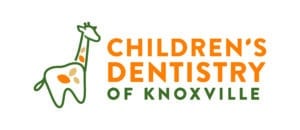Children should have their first dental visit by their first birthday or within six months after their first tooth appears. This is recommended timing by the American Association of Pediatric Dentists.
Baby teeth are crucial for chewing, speaking, and holding space for permanent teeth. They also play a significant role in the development of the jaws and face.
Prevent tooth decay by maintaining good oral hygiene, limiting sugary snacks and drinks, ensuring fluoride intake is adequate, and visiting the dentist regularly for check-ups and cleanings.
Start using a rice-sized amount of fluoride toothpaste when your child’s first tooth appears. Increase to a pea-sized amount for children ages 3 to 6.
Thumb sucking can lead to dental issues like misaligned teeth and bite problems if it continues beyond the age of 3-4 years.
Children should visit the dentist every six months for routine check-ups and cleanings, unless advised otherwise by the dentist.
Fluoride is a mineral that strengthens tooth enamel and helps prevent cavities. It can be found in toothpaste, some community water supplies, and professional dental treatments.
If you think your child may have a dental emergency, visit our emergencies page to help you decide the severity of response needed. Call our office if there are any questions along the way.
Dental X-rays are safe for children and are used sparingly with appropriate safety measures, such as lead aprons and modern, low-radiation techniques. Learn more about our diagnostic imaging.
Help your child overcome fear of the dentist by choosing a child-friendly dental practice, explaining what will happen in positive terms, and staying calm and supportive during visits.
Dental sealants are protective coatings applied to the chewing surfaces of back teeth to prevent decay. They are recommended for children and teenagers prone to cavities.
Clean your baby’s teeth with a soft, infant-sized toothbrush and a smear of fluoride toothpaste. Gently brush all surfaces twice a day. Learn more about proper baby teeth brushing in our resource center.
Signs of teething include drooling, chewing on objects, irritability, and sometimes a slight increase in temperature. Red, swollen gums are also a common symptom.
Yes, children should use a mouthguard during any sport that could result in a blow to the face or mouth to protect their teeth and prevent oral injuries.
Pediatric pulp therapy, also known as a baby root canal, treats and preserves a tooth that has been affected by decay or injury that reaches the pulp (nerve) inside the tooth. It helps maintain the tooth until it naturally falls out.
